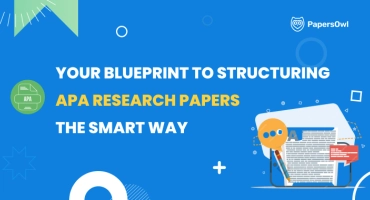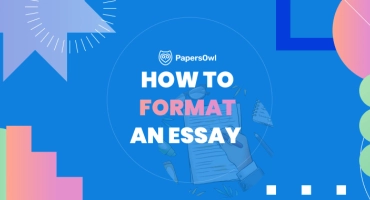Research Paper Table of Contents Made Simple
Table of contents
- 1 Why a Custom Table of Contents Matters?
- 2 The Main Types of TOCs
- 3 Things to Include in Your Table of Contents
- 4 Things to Avoid in a Research Paper Table of Contents
- 5 How to Format Research Papers in Microsoft Word
- 6 Common Mistakes in Table of Contents Creation
- 7 Updating the Table of Contents
- 8 Final Summary and Expert Tips
In academic research, structure and clarity are paramount. A well-organized research paper is easier to read and presents the author’s ideas logically and efficiently. If the task of drafting and formatting an entire academic work is overwhelming, you can decide to do my research paper for me by utilizing professional services. A table of contents is one key element in achieving this clarity.
Often an overlooked part of the research, a well-constructed table of contents can guide readers, helping them navigate complex discussions and quickly find essential sections.
This guide explores the role, format, and creation of a professional table of contents for academic papers, ensuring it adds to the work’s readability and professionalism.
Defining the Table of Contents
A table of contents (TOC) is a section in a research paper that lists the major headings and subheadings, allowing readers to see the paper’s structure at a glance. It provides a quick reference for locating specific topics, creating an organized flow that benefits both writers and readers. A TOC reflects the hierarchy of the paper’s content, providing a snapshot of its entire framework.
Why a Custom Table of Contents Matters?
A TOC does more than guide readers; it offers a preview of the content structure, which is especially useful for lengthy research papers. It signals to readers that the paper is well-organized, suggesting a methodical approach to research. A well-done TOC also improves the work’s credibility, reflecting the author’s attention to detail and thorough research organization.
Best Placement for a Table of Contents
In most academic and professional papers, the table of contents appears immediately after the title page and abstract. This placement provides an early overview, enabling readers to understand the paper’s scope before delving into the content. Ensuring it is in a prime, visible position reinforces its purpose as a navigation tool.
The Main Types of TOCs
Academic papers have different TOC styles, each suited to different projects. Here are the most common styles with examples:
- Basic TOC lists only the primary sections: Introduction, Methodology, Results, and Conclusion. Example:
- Introduction
- Literature Review
- Research Methodology
- Data Analysis
- Conclusion
- Detailed TOC includes subsections ideal for more intricate topics or extended papers.Example:
- Introduction1.1 Background1.2 Research Objectives
- Literature Review2.1 Previous Studies2.2 Gaps in Research
- Methodology3.1 Data Collection3.2 Data Analysis Techniques
- Numeric TOC uses a numbered structure commonly found in scientific papers. Example:Chapter 1: IntroductionChapter 2: Literature ReviewChapter 3: Methodology
Select a custom table of contents style depending on the paper’s length. Each serves a unique purpose, and choosing the right one enhances the paper’s readability.
Things to Include in Your Table of Contents
A well-formatted table of contents serves as a logical outline that guides readers through your main points. Sections typically included are:
- Introductory Page
- Main Sections (such as Literature Review, Methodology, Results, etc.)
- Subsections within each main section
- Conclusion and any Final Remarks
Creating a research paper table of contents can be effortless with an automatic table. To ensure accuracy, apply heading styles to organize your content effectively, making it easy for the tool to generate a structured layout.
Include page numbers for each section to help readers navigate your work. If you’re following APA style, remember to format the table of contents according to its guidelines for consistency and professionalism.
Including these key sections ensures the TOC fulfills its purpose, offering a clear and comprehensive view of the paper’s organization.
Things to Avoid in a Research Paper Table of Contents
While a TOC should provide a thorough overview, avoid cluttering it with unnecessary elements. Items to omit include:
- Minor headings that don’t directly impact the paper’s primary focus;
- Details such as acknowledgments or cover pages unless specifically required;
- Appendices, unless they are directly relevant and discussed in the paper’s main body.
Keeping the TOC concise makes it more effective, providing readers only with the essential structure of the academic writing project.
How to Format Research Papers in Microsoft Word
Creating a TOC in Microsoft Word can be quick and effective with the following steps:
- Prepare Headings: Apply styles (e.g., Heading 1, Heading 2) to each section.
- Insert the Table of Contents: Go to the “References” tab, select “Table of Contents,” and choose a style.
- Customize: Apply the same font styles, adjust the heading style, or change the layout to match your paper’s design.
- Update as You Write: Since academic projects often undergo revisions, Word’s automatic TOC feature allows easy updates by clicking “Update Table.”
Word’s automated TOC feature can save time and eliminate errors, ensuring proper revisions to headings or every corresponding page number for those writing custom research papers. This efficiency allows writers to focus on refining their research content rather than manual formatting.
Common Mistakes in Table of Contents Creation
Creating a table of contents may seem straightforward, but a few common errors can negatively impact the document structure. By avoiding these pitfalls, you can ensure that your table of contents remains a clear and helpful guide to writing a high-quality paper.
Different Heading Styles
One of the most frequent issues in table of contents creation is inconsistency between the corresponding headings in the TOC and the actual section titles in the paper. It is confusing when sections in the main text differ from those listed in the TOC.
To prevent this, apply heading levels that align with the paper’s tone and structure, ensuring that each entry in the table of contents is an exact match.
Overloading with Details
Another common mistake is overcrowding the table of contents with too many minor headings and subheadings. While detailed structure can be helpful in some cases, an overly detailed TOC can appear cluttered and challenging to navigate.
Include only the main sections and essential subsections, keeping your table of contents clean and focused on guiding readers through the most critical elements of your work.
Incorrect Page Numbers
Even minor discrepancies in page numbers can undermine the purpose of a table of contents. As you make revisions to your academic paper, it’s crucial to double-check that you have corresponding page numbers in TOC and main text. Incorrect page numbers can lead readers to the wrong sections, diminishing their experience and potentially casting doubt on the overall quality of the work.
Ignoring Updates After Edits
Often, writers overlook updating the table of contents after making significant edits or reordering sections. This error can leave sections out of sync with the TOC, making navigation challenging for readers.
Regularly updating the TOC ensures consistency throughout the research paper, particularly important in custom research papers writing service, where the TOC often serves as a structured roadmap through complex topics.
By sidestepping these common mistakes, your table of contents will become a helpful and reliable navigation tool that enhances the reader’s experience and presents a polished, professional research paper.
Updating the Table of Contents
Edits and additions are often necessary for research as work progresses, and keeping your table of contents up-to-date is essential to maintaining accuracy. Every time you revise a section, adjust heading styles, or add new content, it’s important to ensure these changes are reflected in the table of contents to avoid inconsistencies.
In Microsoft Word, updating the TOC is straightforward. You can refresh your table of contents automatically using the “Update Table” option under the “References” tab. This feature is especially valuable in custom research paper writing, where frequent adjustments to sections and headings can make manual updates time-consuming and prone to error.
When you select “Update Table,” Microsoft Word provides two options:
- Update Page Numbers Only: This is useful if you’ve made minor changes that only affect the layout, ensuring page numbers are correctly aligned without altering the structure.
- Update Entire Table: This option should be used when you’ve modified headings or sections or added new sections. It will reformat the entire table of contents to include these changes.
Incorporating this step as part of your final revisions ensures that your table of contents remains a reliable guide for readers. An accurate and well-maintained TOC improves readability and reflects the professionalism and thoroughness expected in custom research paper writing.
Regular updates prevent errors, making the table of contents a dependable tool for effortlessly navigating the entire research paper.
Final Summary and Expert Tips
A well-crafted table of contents is more than a list of sections; it’s a roadmap that enhances readability and highlights the paper’s structure. Here are some final tips:
- Use Clear, Descriptive Titles: Help readers understand the content of each section immediately.
- Choose a Professional Style : A consistent, simple format makes the TOC more readable.
- Update Regularly: Ensure the table of contents remains accurate by refreshing it after each major revision.
In summary, mastering the creation and formatting of a table of contents enhances the professionalism of any research paper. Paying attention to detail and avoiding common pitfalls will make a strong impression on your readers and elevate the overall quality of your academic writing.
A polished TOC reflects the care and thoroughness that go into successful research ─ qualities especially valued in academic and custom research paper writing services.







